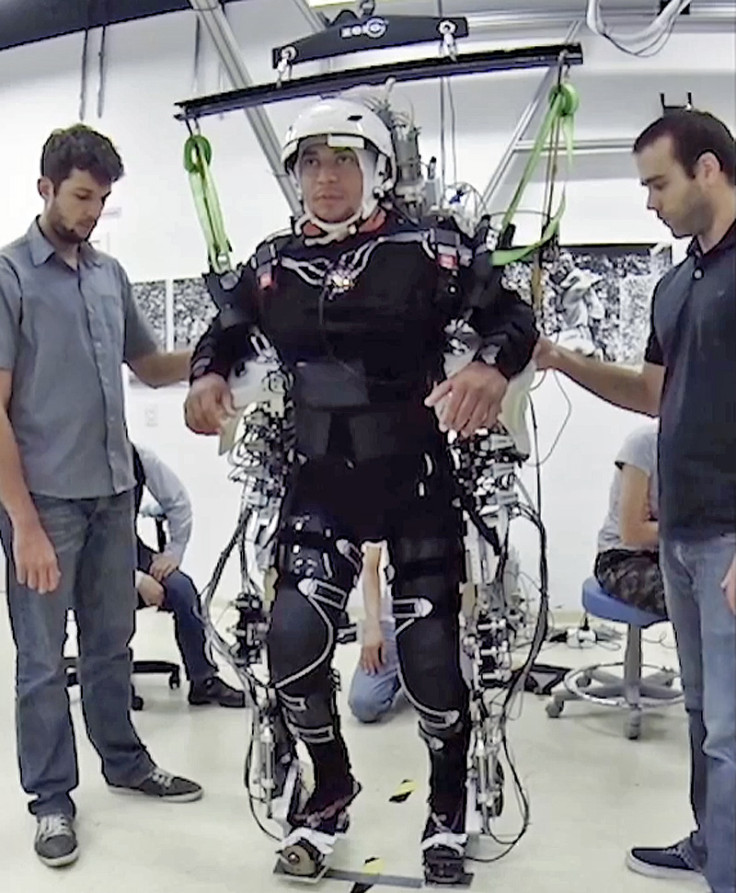How Facebook could make telepathic social media possible: The science behind brain-computer interfaces
Mark Zuckerberg wants to build a 'mind-reading' social network, here's how it could work.

Social network Facebook is currently hiring neuroscientists to help build brain-computer interfaces, ostensibly to pursue founder Mark Zuckerberg's keen interest in telepathy, but mind control doesn't exist, so what is Zuckerberg really up to?
Facebook's California-based hardware division Building 8 is currently looking to hire brain-computer interface engineers, as well as engineers specialising in neural imaging, signal processing and haptics (ultrasound touch technology). The roles require advanced knowledge of physics, electrical engineering, biomedical engineering, neuroscience, haptics and computer science.
"The B8 team will apply Darpa-style breakthrough development at the intersection of ambitious science and product development. It will operate on aggressive, fixed timelines, with extensive use of partnerships in universities, small and large businesses... we are looking for a slightly impatient individual willing to face down their fear of failure to accomplish bold things," Facebook concludes in all the recruitment ads on its website.
The ad says that the positions are all two-year contracts and the aim is for all the engineers to work together in a new "Technical Project Team" to develop new products and create partnerships needed to develop various advanced technologies, including advanced brain-computer interfaces, noninvasive neuroimaging, audio signal processing algorithms "for a communication and computing platform of the future" and "realistic and immersive" haptics experiences.
But mind control is just science fiction, right?
In June 2015, Zuckerberg held a "Townhall Q&A" event where users were invited to post questions in comments on a public status and receive a direct response from Zuckerberg in the comments. The Q&A session saw questions posed by renowned scientist Stephen Hawking as well as former actor and Republican senator Arnold Schwarzenegger.
Hawkings asked Zuckerberg what big questions in science he was thinking about, and Zuckerberg said that he was curious about how the brain works and whether it is possible for humans to be empowered to learn more.
He also said in reply to another question posed that he was particularly interested in telepathy: "One day, I believe we'll be able to send full rich thoughts to each other directly using technology. You'll just be able to think of something and your friends will immediately be able to experience it too if you'd like."
If that response is anything to go by, then it sounds like Facebook might be looking to develop a sort of brain-computer interface that could help individuals to immediately share their thoughts in posts or by Messenger without needing to type on a computer or mobile device, which would be revolutionary.
Brain-computer interfaces — the next frontier

It is interesting that Zuckerberg is seriously thinking about brain-computer interfaces, as interest in this field of research has been rising over the past two years, even though the work is mostly experimental and there are no commercial solutions available.
Darpa (the US Defense Advanced Research Projects Agency) is very keen on making brain-machine interfaces possible in order to help computers monitor brain activity and has been providing funding and support to multiple academic institutions around the world looking into this field, such as the brain chip developed by University of Melbourne in February 2016 that can be injected into the brain without invasive surgery and then used to collect electrical signals and then send the data to a computer for analysis.
There's also the neural lace sensor developed by Harvard and Beijing's NCNST in 2015 — a breakthrough where scientists successfully managed to connect the brains of mice to computers in order to monitor their brain activity.
Stanford University is also working on brain-sensing technology, and in September 2016, announced that monkeys received multi-electrode array implants and were then successfully trained to transcribe passages from a Shakespearean play using only their minds, by interpreting brainwaves and converting them into the act of typing on a keyboard.

One theory is that implants could help US Air Force personnel to pilot fighter jets with their minds, and there are also great hopes that the technology could be used to help treat brain-related medical conditions from post-traumatic stress disorder (PTSD) to arthritis.
Another example is the exoskeletons being developed by neuroscientists and roboticists from Duke University and the Walk Again Project to help paraplegics regain the ability to walk. Although not invasive, the exoskeleton suits monitor brain activity and, when put together with virtual reality software, have enabled the researchers to retrain the human brain to control muscles once again in completely paralysed patients, to the extent that patients went from being "completely paralysed" to only "partially paralysed".
At the moment, brain-machine interfaces have to be implanted, and although the animals in the trials are thriving, the process is still implanted, so a long way still needs to go to make sure that these technologies are safe for humans.
We could be wrong, but it seems more likely that Facebook wants the technology so it can create next-generation futuristic entertainment experiences that enable computers to pick up users' thoughts, as well as allowing users to feel objects that aren't physically there using ultrasound haptics feedback.
© Copyright IBTimes 2024. All rights reserved.







